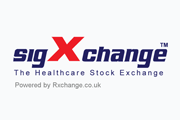In May 2012 representatives from sigXchange and the MHRA met to discuss how the changes to the Medicines Act 1968 – specifically how the repeal of the section 10.7 exemption (10.7) – will affect the operation of sigXchange. This is a summary of those discussions and the agreements reached.
The MHRA confirmed that after the repeal of 10.7, in accordance with the MHRA policy statement, supply of medicinal products would still be possible without a WDL in some circumstances. This is in order to ensure the supply chain as it currently operates is not significantly impacted upon and that patients’ health and need are not compromised. The objective is to ensure compliance of UK law with EU law and will stand up to scrutiny by the European Commission.

The MHRA made it very clear that, in monitoring and regulating compliance with the EU directive, healthcare provision should not be compromised. They described a sliding scale with the selling or supply of medicines to meet patient need at one end and the commercial trading of medicines at the other. Supply to meet an identifiable patient need was fully acceptable and does not require a WDL. The ‘healthcare providers model’ is intended to draw a distinction (on this sliding scale) between sales which will be very close to the end user e.g to a pharmacy who has a specific patient requirement, a hospice for administration to patients, a clinic for use within the clinic, GPs within their practice etc. and sales which are intended to continue within the supply chain e.g. from one pharmacy with a WDL to another or for assimilation for export.
Conversely, commercial trading does require a WDL. Although the MHRA will monitor how pharmacists are applying this and will consider cases on an individual basis, they expect pharmacists to use their professional judgment regarding if and when they need a WDL. A pharmacist, before making a supply, should establish and have documented evidence from the recipient that the supply will for patient treatment and not for onward ‘trading’.
The MHRA also explained that they had issued a statement on the way that MHRA as the regulator would enforce this regime. The statement is not intended to define whether individual actions fall within the bounds of acceptability, rather that the application of the legislation by pharmacists should include appropriate professional judgement as to whether their activities may be viewed as ‘commercial’, and therefore warrant the holding of a WDL.
Occasional need and small quantities would need to be the subject of professional discretion in the same way that ‘insubstantial’ or ‘inconsiderable’ was previously. Individuals need to satisfy themselves that the provisions of the ‘healthcare providers model’ is not being flouted. By examining cases on an individual basis there should be enough scope for pharmacists to act reasonably within the healthcare provider model, unless their activity is clearly commercial, requiring a WDL.
sigXchange explained they were concerned that they or one of the sigXchange/sigXchange users could find themselves in front of the courts due to differences in legal interpretation of the new legislation. The MHRA explained that as the regulator they are responsible for ensuring compliance with EU legislation. Any challenge to the proposed interpretation would be for MHRA to defend. However, any clear breach of the rule that commercial trading must be undertaken by the holder of a wholesale dealer’s license would be considered by MHRA on a case by case basis, and any decision to prosecute would be subject to the public interest test.
The MHRA were also asked about the 2010 amendments to the Marketing Authorisation Regulations concerning advertising unlicensed medicinal products, specifically in the context of posting of price lists on websites such as sigXchange. sigXchange put to them that they would wish to have a part on their website which may be restricted by login access to health professionals whose bona fides had been first checked and validated. Previous MHRA advice, that to avoid being considered a catalogue and in breach of the advertising provisions, a price list should comprise only of a list by product or ingredient name, usual pack size and price.
Implications for sigXchange and sigXchange Pharmacies can continue to list stock they have for sale – there is not a requirement that a request has to have been made for specific stock before it is listed.
The seller must be satisfied that the purchase complies with the ‘healthcare providers model’, therefore sigXchange will ensure that buyers cannot place an order for stock unless they confirm that the order will not be traded on. This confirmation will be part of the order notification to the seller and included in the order history.
Pharmacies can buy from other pharmacies that do not possess a WDL but should confirm that the purchase is for retail use only, unless WDL holders are transacting on a wholesale basis with each other.
Licensed manufacturers of unlicensed medicines may list on sigXchange as described above.

